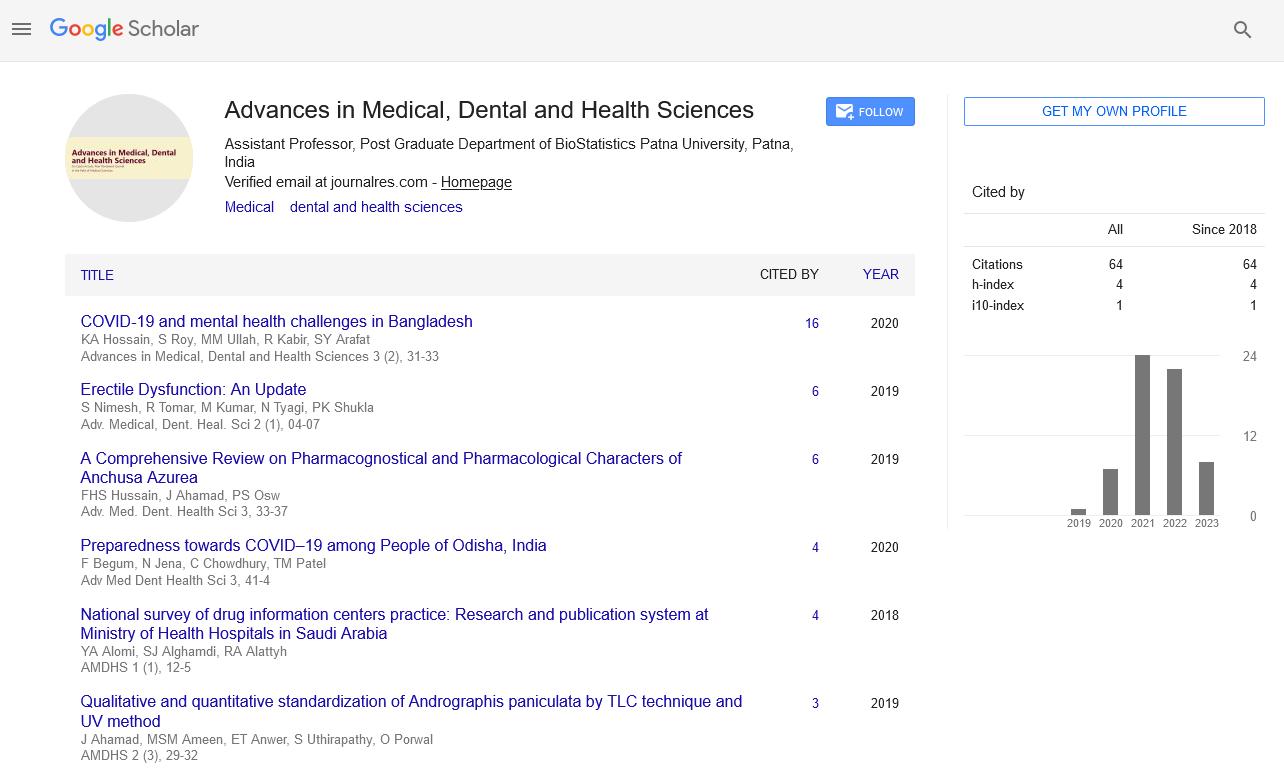Clinical Presentation And Outcome Of Aluminium Phosphide Poisoning
Abstract
Author(s): Abu Bakar Siddique*, Mst. Nilufa Yeasmin, Md. Halimur Rashid, Md. Muntasir Rahman, Syed Shamsul Arefin and Md. Moniruzzaman Asraf
Introduction: Pesticide poisoning, whether due to self, accidental, occupational or for homicidal purpose, is a global public health problem, and self-poisoning accounts for one-third of the world suicide rate. Since agriculture is the main occupation in Bangladesh, pesticides are widely and easily available in ordinary village grocery shops. Their easy availability makes them a popular method of self-harm particularly in the rural areas.
Objective: To assess the clinical presentation and outcome of aluminium phosphide poisoning.
Methods: It was a descriptive cross sectional study, performed in Department of Medicine, Shaheed Ziaur Rahman Medical College Hospital (SZMCH), and Bogura, Bangladesh. Over a period of six months from January 2018 to June 2018, consecutive 50 patients with history of Gas tablet poisoning admitted in all four Units of Medicine ward that fulfilled inclusion criteria at admission were enrolled in the study.
Results: The number of cases of aluminium phosphide poisoning were 50 (0.62 %) out of 8102 admitted patients. The mean age was 24.7 ± 8.8 years. There were 27 (54%) male and 23 (46%) female, with male: female ratio being 1.7:1. 44 (88%) patients came from rural’ area and 6 (12%) patients from urban areas. Incidence of poisoning was high among married persons 38 (76%) and housewives 16 (32%). Regarding education background and monthly family income more than half of the patients, 36 (72%) were below SSC group and 42 (84%) had between 5000-10000 TK BD respectively. Among 50 patients, 37 (74%) took one tablet. The commonest clinical presentation was GIT symptoms and concomitant cardiovascular symptoms. Clinical examination revealed tachycardia (54%) and cardiogenic shock (28%) at admission. Among the biochemical abnormalities raised S creatinine and hypokalaemias are associated with increased mortality. Out of 50 patients, 40 patients of aluminiun phosphide poisoning where ECG was done at admission or subsequently and most common abnormality was tachyarrythmia followed by ST depression (42.5%). Most of the cases reached to hospital within 2 hours and not a single patient was reported to survive when the time elapsed exceeded 4 hours. The overall mortality rate was 60%.
Conclusion: In agriculture based developed countries like Bangladesh acute pesticide poisoning is a major health problem resulting in a high mortality and morbidity. The diagnosis of poisoning requires adequate history of exposure, clinical features and toxicological analysis of stomach content, particularly silver nitrate impregnation test in case of aluminum phosphide poisoning. Scientific diagnostic methods are not available in Bangladesh, so diagnosis is mostly clinical.
